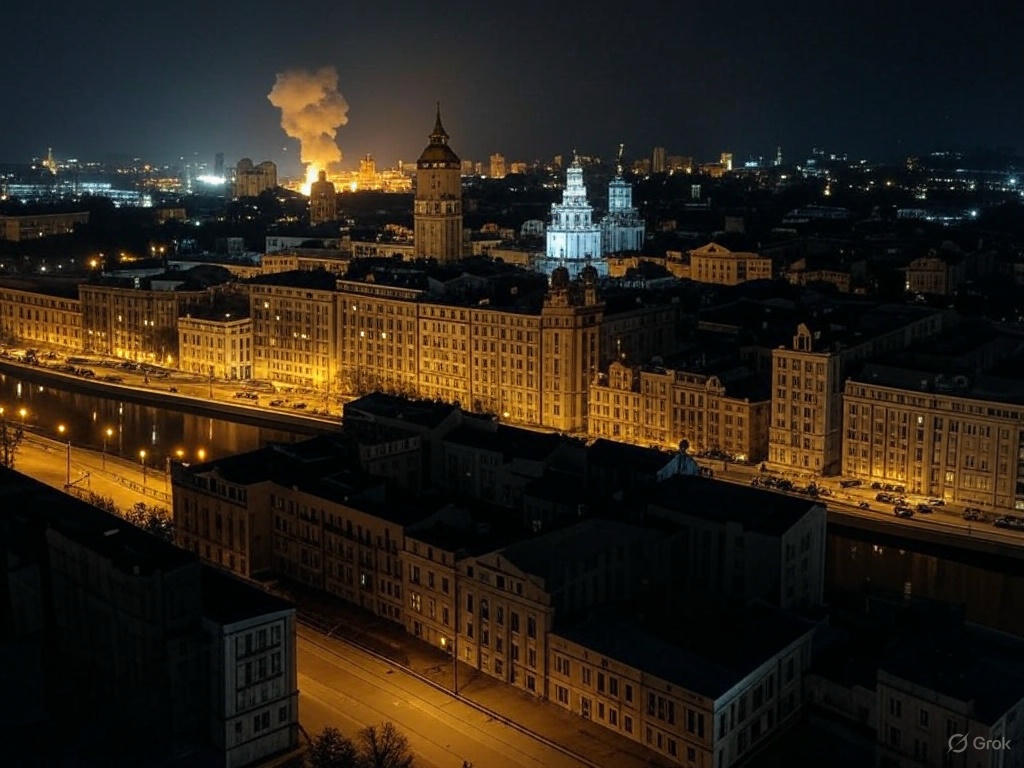the night of April 5, 2025, Kyiv, the capital of Ukraine, reverberated with the sounds of explosions as Russia launched a fresh wave of attacks, targeting the city with ballistic missiles and drones. This assault comes on the heels of earlier deadly strikes across Ukraine, escalating tensions in a conflict that continues to devastate civilian lives and infrastructure. The latest bombardment has renewed fears of an intensifying Russian offensive, drawing sharp international attention to the ongoing war.The Attack on KyivReports emerging from Kyiv indicate that Russian forces deployed a combination of ballistic missiles and drones in the overnight assault. Ukrainian air defenses were activated, with explosions lighting up the night sky as interceptors engaged incoming threats. Local authorities urged residents to seek shelter, a now-familiar directive for a population weary from months of relentless attacks. Preliminary assessments suggest that at least two missiles struck industrial areas, causing significant damage to buildings, including an industrial facility and a civilian office block. The full extent of casualties and destruction is still being evaluated as emergency services scramble to respond.This strike follows a pattern of Russian military operations aimed at crippling Ukraine’s infrastructure and morale. Just weeks prior, on March 22-23, 2025, Kyiv endured a massive drone barrage that claimed the lives of a 5-year-old boy and his father, while injuring an 11-month-old infant. The targeting of residential areas in that attack underscored the human toll of the conflict, prompting accusations of deliberate civilian targeting.A Broader Campaign of ViolenceThe April 5 attack on Kyiv is part of a broader wave of Russian strikes across Ukraine. Earlier incidents, such as the July 2024 missile assault that destroyed a children’s cancer hospital in Kyiv, have fueled outrage and galvanized international support for Ukraine. The recurrence of such strikes suggests a strategic intent to overwhelm Ukrainian defenses and disrupt daily life, even as diplomatic efforts to broker peace falter.Posts on X have highlighted the intensity of the recent Kyiv attack, with users noting the timing—mere hours after a reported diplomatic visit to the city on April 5. While unverified, these accounts speculate that the bombardment may have been a signal of Russia’s rejection of ceasefire proposals or a show of strength amid negotiations. Regardless of motive, the strikes have deepened the sense of urgency among Ukraine’s allies to bolster its defenses.Civilian Impact and ResponseFor Kyiv’s residents, the latest attack is another chapter in a grueling ordeal. Shelters filled quickly as air raid sirens blared, a stark reminder of the war’s unrelenting grip on daily life. Ukrainian officials have condemned the strikes, with some labeling them as acts of “genocidal terrorism” aimed at maximizing civilian suffering. The targeting of industrial zones, while less populated than residential districts, still threatens the city’s economic stability, a critical factor in Ukraine’s ability to sustain its war effort.President Volodymyr Zelensky and his administration have reiterated calls for increased military aid, particularly air defense systems, to counter Russia’s aerial onslaught. The Ukrainian military reported successfully intercepting several missiles and drones, but the sheer volume of attacks continues to strain resources.International ReactionsThe international community has watched these developments with growing alarm. The timing of the Kyiv strikes, coinciding with reports of stalled peace talks, has raised questions about Russia’s willingness to negotiate in good faith. Previous instances—such as Russia allegedly breaking a ceasefire shortly after agreeing to it—have eroded trust in diplomatic channels. Western leaders are likely to face renewed pressure to escalate sanctions and expedite arms deliveries to Ukraine.Looking AheadAs the sun rose over Kyiv on April 6, 2025, the city bore fresh scars from the night’s violence. The resilience of its people, tested time and again, remains a defining feature of Ukraine’s resistance. Yet, with Russia showing no signs of relenting, the path to peace grows increasingly uncertain. The strikes on Kyiv, following deadly attacks elsewhere in Ukraine, signal a perilous escalation that could reshape the conflict’s trajectory in the weeks ahead.For now, the world watches as Ukraine braces for what may come next, its capital standing as both a symbol of defiance and a target of unrelenting aggression.




You must be logged in to post a comment.